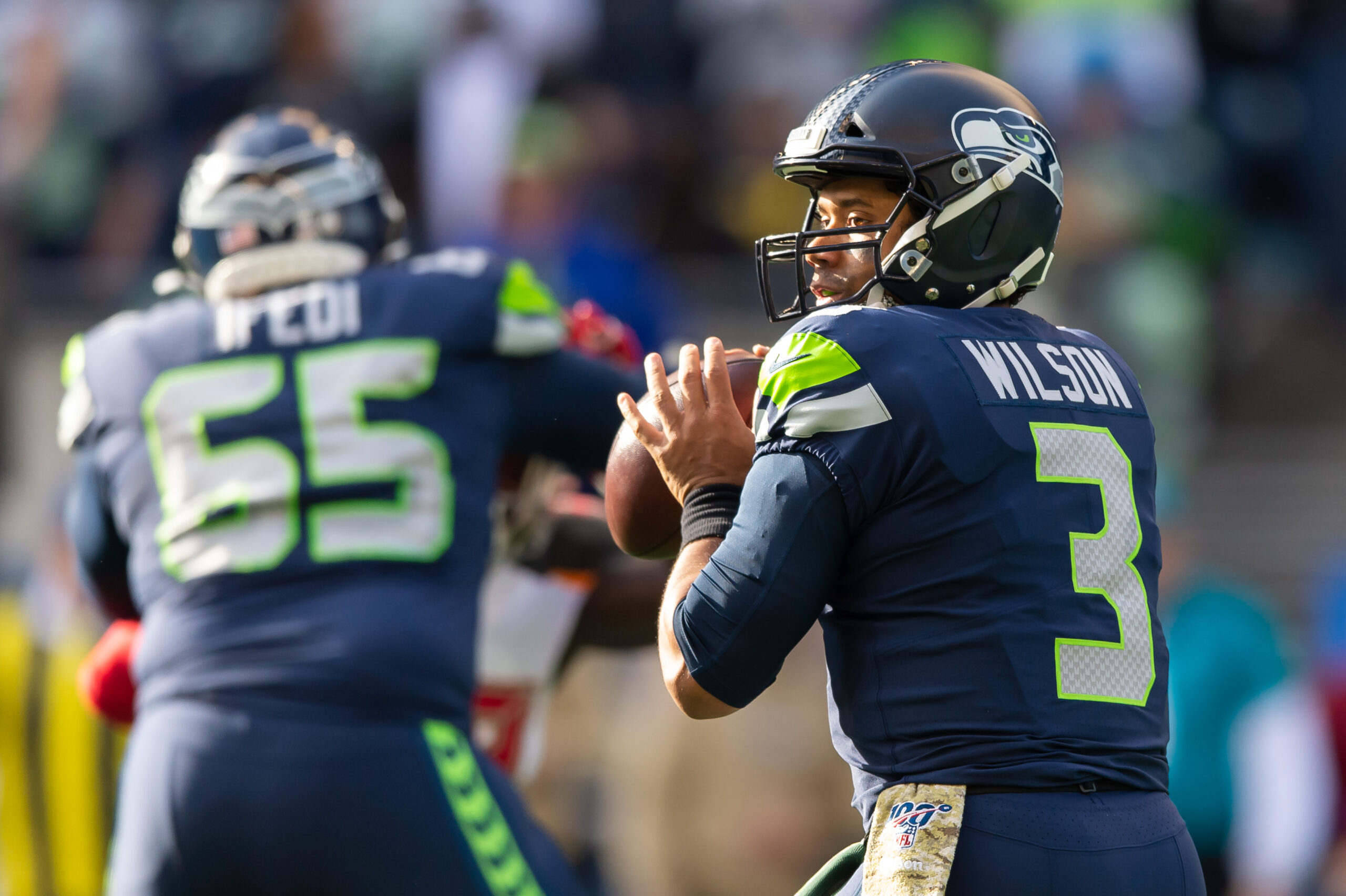The biggest player on the Tampa Bay Buccaneers roster may have the biggest momentum going into the 2019 NFL season. Vita Vea, the 12th overall selection in last year’s NFL Draft, had a number of moments where he showcased his abilities while starting the last six games of the regular season.
Interior defensive linemen are not usually among the most productive players on defense, but that is exactly what Vea was down the stretch.
Perhaps Vea’s most dominating game was at home against San Francisco, the first of this six-game stretch.
Against the 49ers, Vea had one sack, one quarterback hit, four total tackles, and three tackles for a loss.
To make this stat line even more impressive, Vea only played in 58 percent of the team’s defensive snaps during this game.
Vea had more impressive games after this performance, including a nine-tackle outing against the vaunted Baltimore Ravens rushing offense. This was the most tackles a Buccaneers interior defensive lineman had in a game since 2007.
Vea continued to earn more playing time as the season progressed, playing in a total of 72 percent of the team’s defensive snaps since his memorable outing against San Francisco.
Impressive performances could have been commonplace for Vea had he not suffered a severe calf strain in July. This injury forced Vea to miss virtually all of training camp, pre-season, as well as the first three games of the regular season.
This was a major setback for Vea, as he missed valuable time in practices as well as games. These repetitions are especially crucial to rookies, who already have a difficult time adjusting to the NFL when they are healthy and able to attend all of the practices and games.
Vea made his NFL debut against the Chicago Bears in Week 4. This began a stretch of seven games where he amassed one sack, one quarterback hit, no tackles for a loss, and only three total tackles.
This makes Vea’s strong finish to the 2018 season vastly more impressive, considering the very slow start after missing so much valuable time.
Vea’s late-season progression was incredibly encouraging, and it appears he is now in a position to succeed even more in Todd Bowles’ base 3-4 scheme.
The 6-foot-4, 347 pound Vea has prototypical size for a nose tackle in the 3-4 defense—the same base defense he excelled in at the University of Washington.
Vea has elite athleticism and strength for not only the defensive tackle position but for a football player in general. At last year’s combine, he ran a 5.10 40-yard dash—an astonishing time for someone who is almost 350 pounds. His 41 bench press reps were the second-most of any player in attendance.
Of Bowles’ former players, current Detroit Lion Damon Harrison is who most resembles Vea in terms of physical attributes.
Harrison, who has been regarded as one of the best run-stopping linemen in the NFL since his days playing under Bowles and the New York Jets, is 6-foot-3 and 353 pounds. He was clocked at 5.54 in the 40-yard dash and recorded 34 bench press reps at Iowa State’s Pro Day in 2012. After going undrafted, Harrison broke out the next year under Bowles, amassing 66 tackles and one sack while starting all 16 games.
Based on performance metrics alone, Harrison was nowhere near the player Vea is athletically. Vea has the talent and ability to become not only an elite run-stopper, but a ferocious and productive pass rusher as well.
Both Bruce Arians and Bowles have stated on multiple occasions that the 3-4 defensive scheme they prefer to use is a one-gap system. Typically, a 3-4 defense utilizes a two-gap system, which assigns responsibility to the defensive linemen, namely the nose tackle, to take on two blockers on every play.
In the one-gap system, gap coverage is distributed evenly between the linemen as well as the four linebackers. For Vea, who most likely will line up as the nose tackle on every play, this means that he will be lined up against the opposing center on every down where a one-gap assignment is used on defense.
Most NFL centers are the smallest and weakest of a team’s offensive line, sometimes under 300 pounds. They rely on intelligence, technique, and relative strength and athleticism to make up for physical disadvantages against opposing defensive linemen.
The one-gap 3-4 defense enables defenders to attack the line-of-scrimmage, gives the choice of attacking the edge of blockers or taking them head-on, and allows them to play the run on the way to the quarterback. This generates a lot of production for linemen with average ability against both the run and pass because they get to attack both play types simultaneously.
All of these philosophies of the one-gap system heavily favor Vea in any matchup. He will have a massive strength, size, and possibly athletic advantage versus against virtually every interior offensive linemen, especially the starting NFL centers in the league.
Vea is tailor-made for any type of hybrid 3-4 defense, especially in the attacking one-gap system.
When he is not directly making a play, Vea’s massive presence will open up many opportunities for the other linemen and linebackers to attack opposing offenses.
One of the main reasons Vea struggled when he came back from his injury was his lack of NFL conditioning. This contributed a lot to his struggles getting off blocks and getting leverage against opposing linemen.
He will now have one full and healthy off-season dedicated to NFL-caliber training and coaching. This will allow him to get in better physical shape, which will enable Vea to use his explosiveness and power consistently in games.
When Vea was drafted, there were questions of how well he would fit schematically in a base 4-3 defense, given that he was the prototypical 3-4 nose tackle.
One year later, Vea could not be a better fit for the new regime.
Vea is exactly who the Tampa Bay defense needs in the middle of its defense heading into year two.






